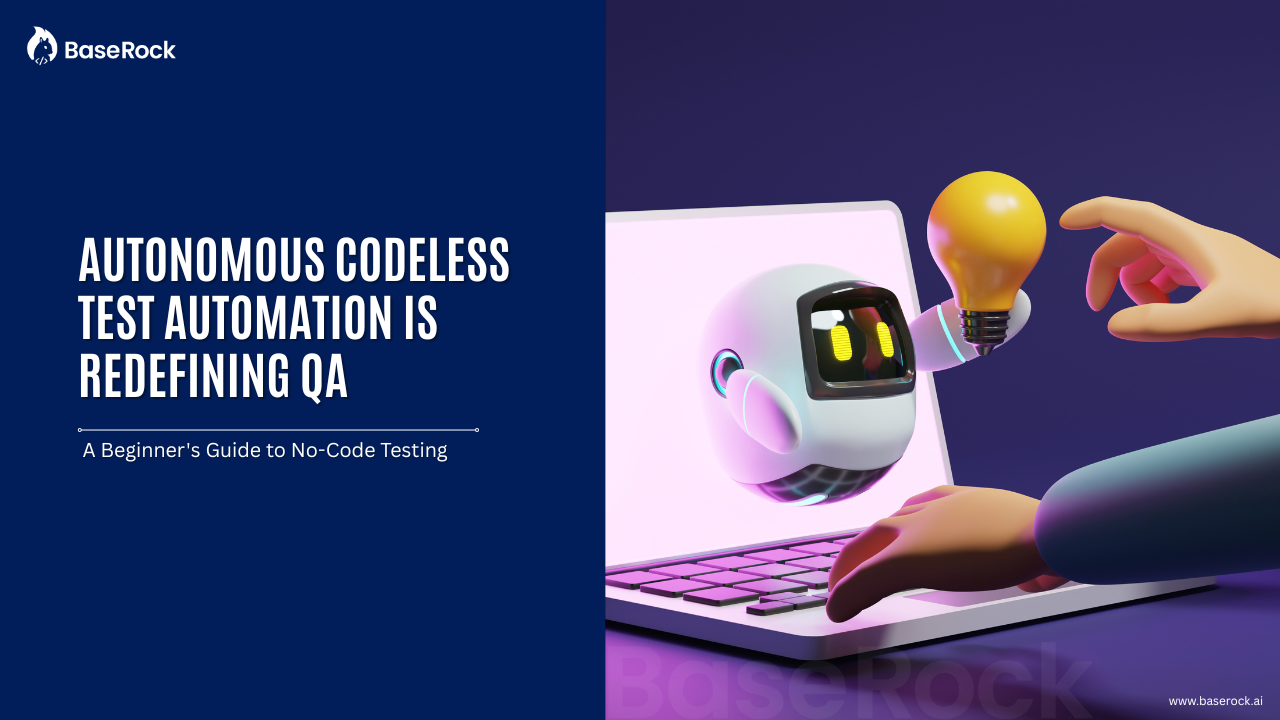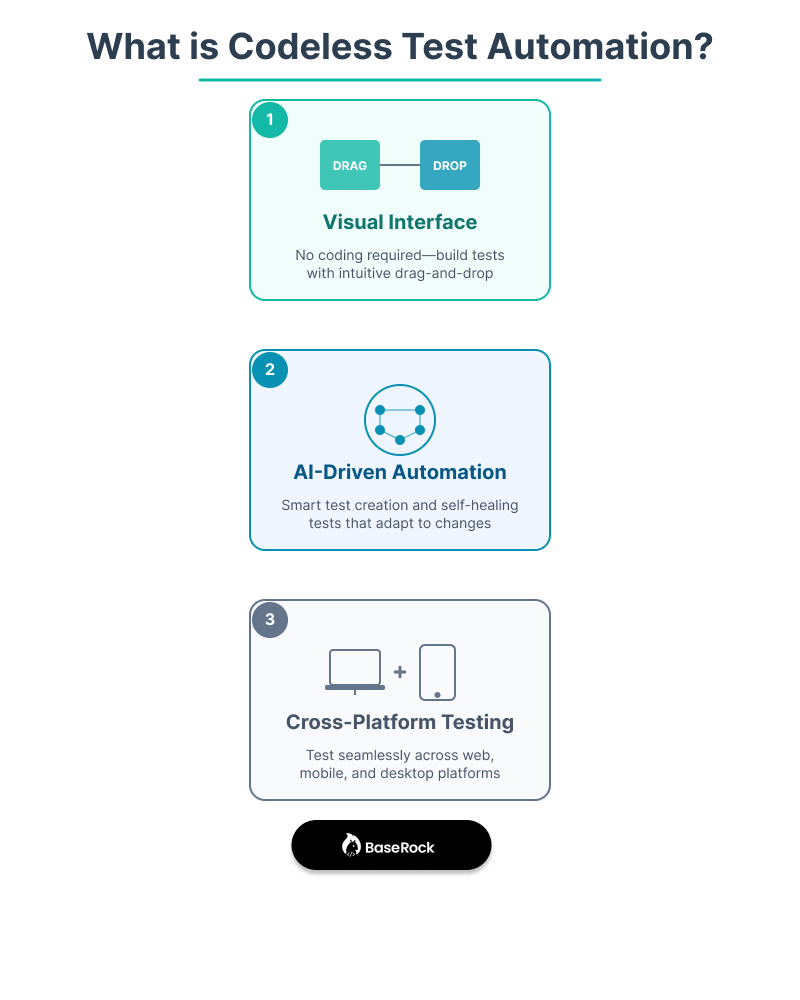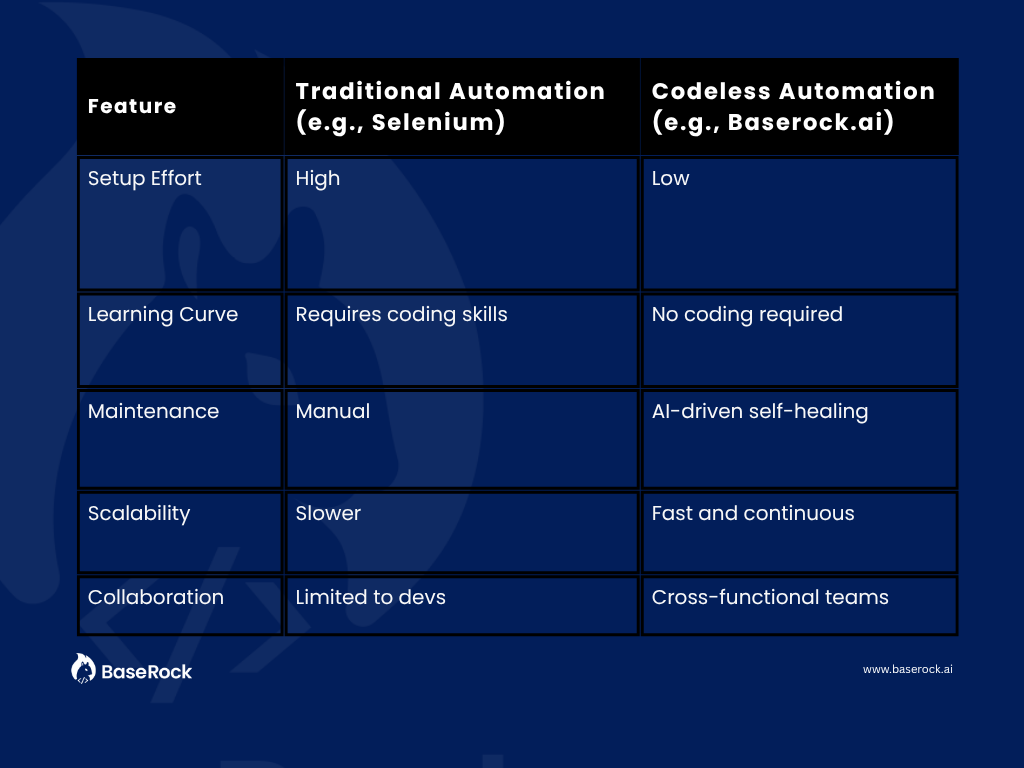.png)

Modern software development demands speed, quality, and agility. Yet, traditional test automation often creates bottlenecks due to complex scripting and dependency on skilled developers. That’s where codeless test automation comes in.
With platforms like Baserock.ai, QA teams can now build, execute, and maintain automated tests—without writing a single line of code. This approach not only accelerates testing but also empowers testers, business analysts, and even product owners to participate directly in quality assurance.
Codeless test automation is a revolutionary approach that allows users to automate tests through visual interfaces, drag-and-drop actions, or natural language commands instead of traditional programming.
Tools in this category—like Baserock.ai—enable non-technical team members to contribute effectively to the testing process. The goal is simple: reduce complexity, increase collaboration, and ensure that automation is accessible to everyone in the software lifecycle.
Codeless testing tools typically offer:
At its core, codeless testing leverages AI and machine learning to simplify and accelerate test creation. Here’s how it works:

Baserock.ai enhances this process with adaptive learning models that continuously improve test reliability over time.
Traditional scripted testing tools like Selenium, Appium, or Cypress require advanced coding knowledge and are prone to breaking whenever application updates occur. QA teams often face:
By contrast, codeless automation bridges these gaps. It reduces the dependency on developers and empowers teams to deliver faster, more reliable test coverage.

The difference is clear — codeless testing enables agile, efficient, and inclusive automation that keeps up with modern DevOps workflows.
Here’s how to begin your journey:
With Baserock.ai, integrating automation into your development cycle is faster and more collaborative than ever.
Integrating codeless automation into your QA process doesn’t require an overhaul. Start by:
This collaborative approach transforms quality assurance from a bottleneck into a competitive advantage.
👉 Try AI-driven codeless automation with Baserock.ai and supercharge your testing today.
1. How much does codeless test automation cost?
Pricing varies by tool and usage. Platforms like Baserock.ai offer flexible, scalable pricing based on project size and automation volume.
2. How do I integrate codeless testing into my CI/CD pipeline?
You can integrate easily via APIs or native connectors to tools like Jenkins or GitHub Actions, allowing continuous testing in every build.
3. What’s the difference between codeless, low-code, and no-code testing?
4. Can I use codeless testing for mobile applications?
Absolutely. Tools like Baserock.ai support both web and mobile platforms for end-to-end automation.
5. Which tools are capable of codeless testing automatically?
Some of the leading tools include Baserock.ai, Testim, Testsigma, and Katalon Studio.
Codeless test automation represents the future of QA — faster, smarter, and more inclusive. It breaks down the barriers of technical complexity, enabling every member of a software team to contribute to quality assurance.
If you’re ready to embrace modern, AI-powered testing, it’s time to explore Baserock.ai and experience the next evolution in test automation.
Flexible deployment - Self hosted or on BaseRock Cloud